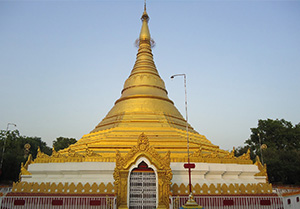
The most visited place of Kushinagar
Today, Kushinagar is a much-frequently visited journey site for Indian and foreign tourists and temples have been built by Indian, Chinese, Sri Lankan, Thai, Burmese, South Korean, Tibetan and Japanese Buddhists, close by the ruins of monasteries and stupas. Kushinagar is one of the main four Buddhists pilgrimage destinations related with the life of Gautama Buddha. The other three are Lumbini, Bodh Gaya, and Sarnath. Today, in Kushinagar, there is a Post Graduate College and an Intermediate school. Today, Kushinagar has numerous lodgings and eateries for use by tourists.
One of the four main pilgrimage sites marking Buddha’s life – the others being Lumbini (Nepal), Bodhgaya and Sarnath – Kushinagar is where Buddha died. There are several peaceful, modern temples where you can stay, chat with monks or simply contemplate your place in the world, and there are three main historical places, including the simple but wonderfully serene stupa where Buddha is said to have been cremated.
The two places most frequently visited in Kushinagar are the MahaparinirvanaStupa, which is built on the place of Buddha’s Mahaparinirvana also termed as the great nirvana or true bliss, and the place of his cremation which is 1.6 km away.The highlight of this modest temple, rebuilt in 1927 and set among extensive lawns and ancient excavated ruins with a circumambulatory path, is its serene 5th-century reclining Buddha, unearthed in 1876. Six metres long, it depicts Buddha on his ancient death-bed and is one of the world’s most moving Buddhist icons. At sunset, monks cover the statue to the shoulders with a long saffron-coloured silk sheet, as though putting Buddha to bed for the night. Near the MahaparinirvanaStupa is found a 1500 year old Buddha-image of the Buddha as he accomplished Parinirvana. The MahaparinirvanaStupa is surrounded by remains of ancient religious monasteries. These monasteries basically form of octagonal temple is topped by a graceful golden spire. The peaceful vibe is a thrown off a bit by the somewhat creepy statues surrounding the temple, which are meant to represent people circumambulating it. Close by is the Buddha museum which Exhibits Buddhist relics, sculptures and terracotta unearthed from the Kushinagar region, as well as some Tibetan rectangular cloth paintings and Mughal miniature paintings.
